高中英语牛津译林版(2020)必修第三册Unit 3 The world online Section B Grammar and Usage教学课件(24张ppt)
文档属性
| 名称 | 高中英语牛津译林版(2020)必修第三册Unit 3 The world online Section B Grammar and Usage教学课件(24张ppt) | 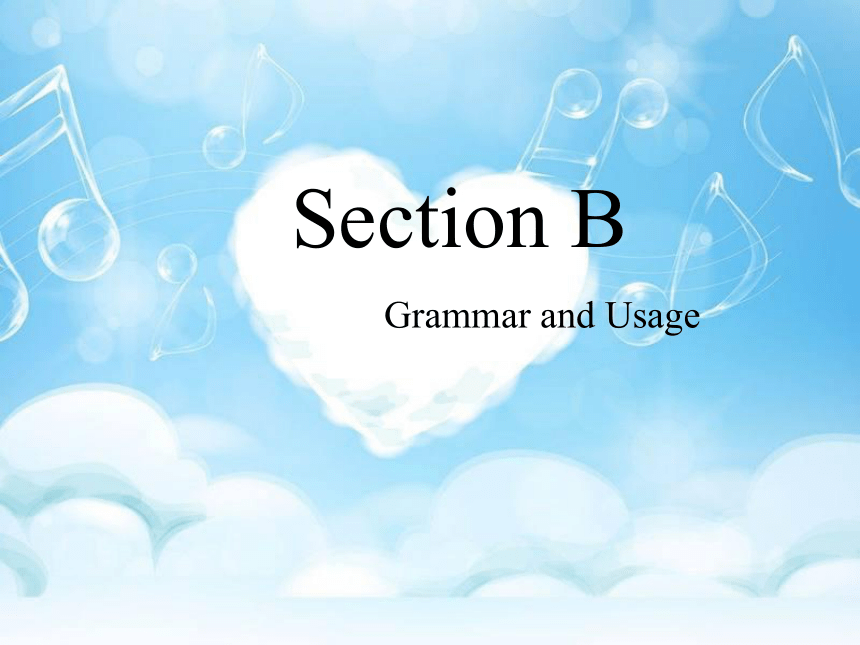 | |
| 格式 | zip | ||
| 文件大小 | 1.6MB | ||
| 资源类型 | 教案 | ||
| 版本资源 | 牛津译林版(2019) | ||
| 科目 | 英语 | ||
| 更新时间 | 2021-11-30 11:19:57 | ||
图片预览


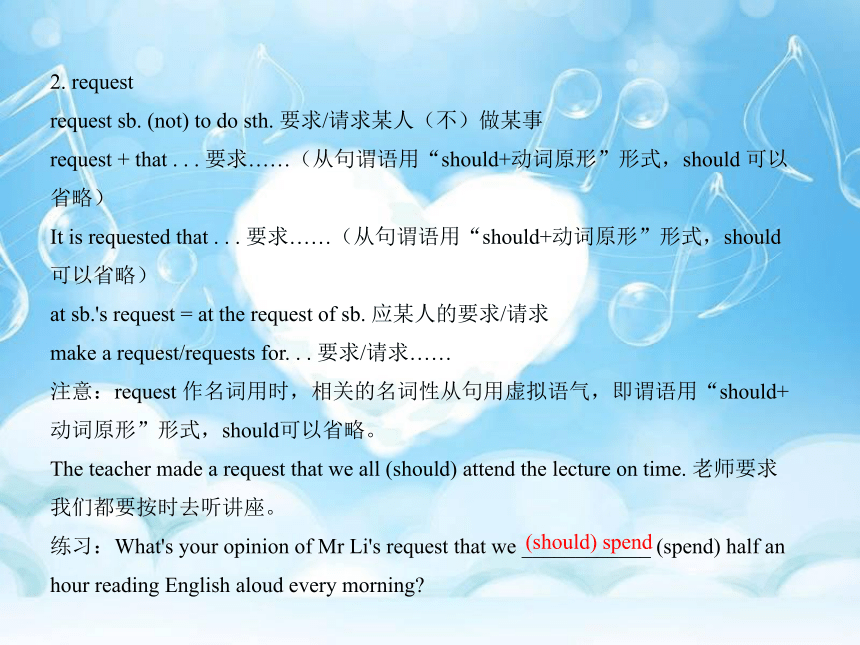
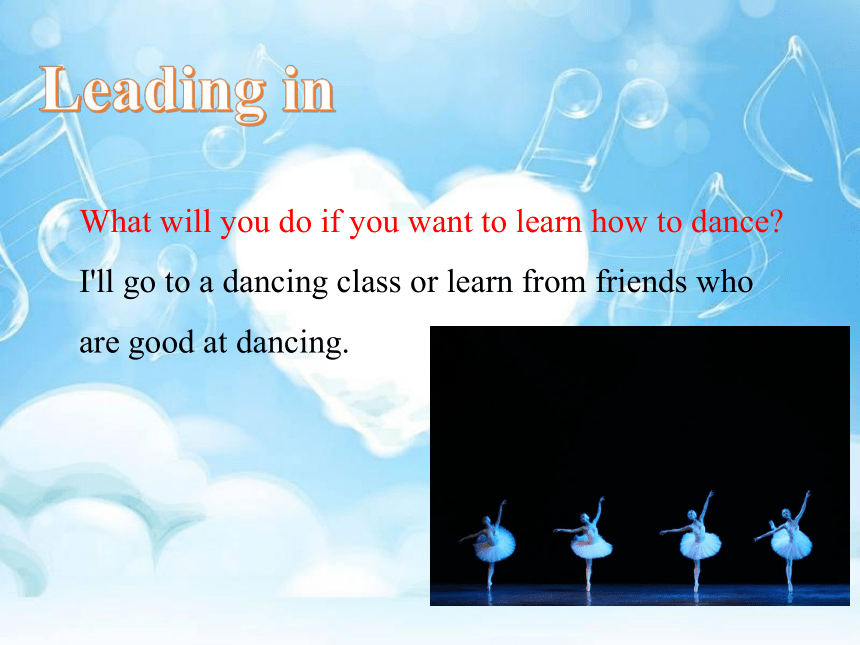

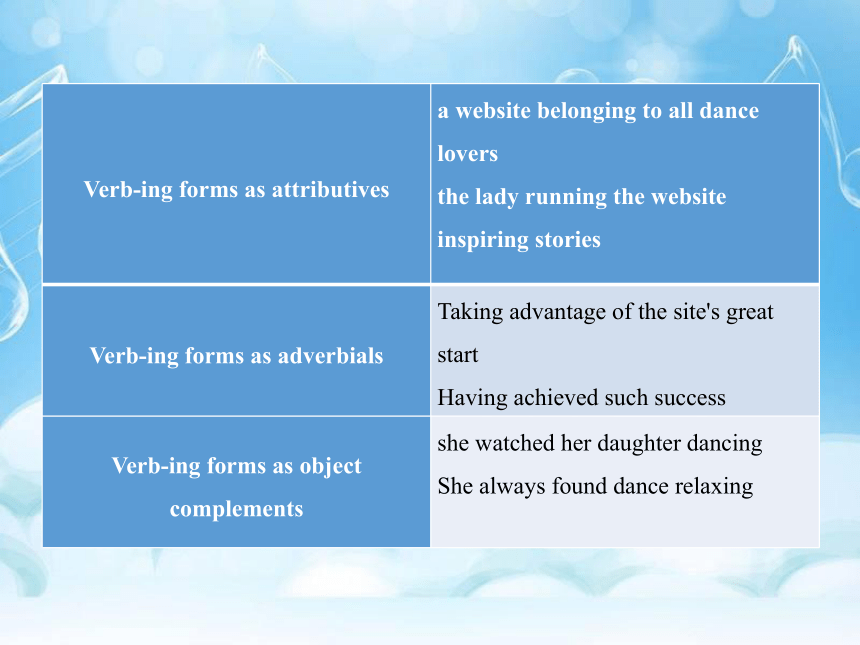

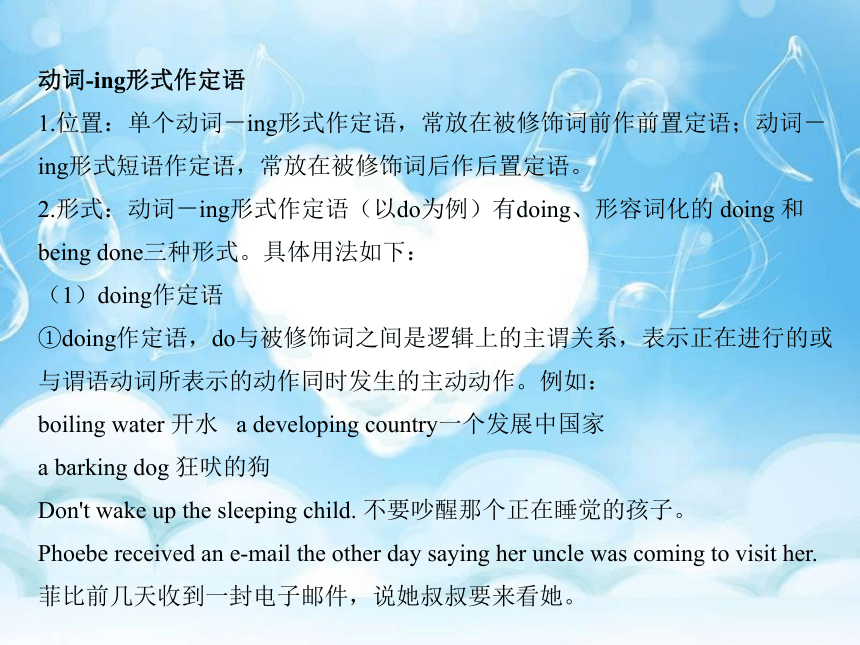
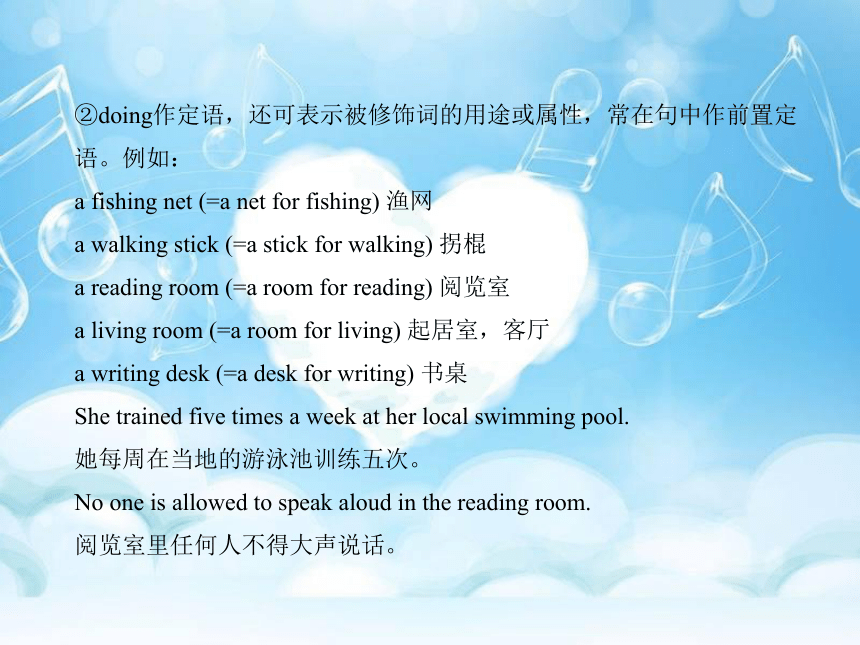
文档简介
(共24张PPT)
Section B
Grammar and Usage
1. set up
(1)建立,开办,创建
I hope I'll set up my own business some day. 我希望有一天能开办自己的公司。
(2)安装好(设备或机器等);设置
She set up her computer in her bedroom so that she could work at home.
她把电脑装在了卧室里,这样她就可以在家办公了。
(3)安排,策划
Can you give me a call on Friday to set up a time for the trip
你可以在周五给我打个电话以排这次旅行的时间吗?
练习:We raised money to ___________________ (设立一个机构) to help the homeless in the flood-stricken areas.
Vocabulary
set up an organization
2. request
request sb. (not) to do sth. 要求/请求某人(不)做某事
request + that . . . 要求……(从句谓语用“should+动词原形”形式,should 可以省略)
It is requested that . . . 要求……(从句谓语用“should+动词原形”形式,should 可以省略)
at sb.'s request = at the request of sb. 应某人的要求/请求
make a request/requests for. . . 要求/请求……
注意:request 作名词用时,相关的名词性从句用虚拟语气,即谓语用“should+动词原形”形式,should可以省略。
The teacher made a request that we all (should) attend the lecture on time. 老师要求我们都要按时去听讲座。
练习:What's your opinion of Mr Li's request that we ____________ (spend) half an hour reading English aloud every morning
(should) spend
What will you do if you want to learn how to dance
I'll go to a dancing class or learn from friends who are good at dancing.
Leading in
(1)Why did Fiona Lin set up the website JustDance
Because she wanted to introduce more people to dance since she had realized that dance had a very positive effect on her daughter.
(2)What is Fiona Lin's future plan
She hopes to attract more users through other forms of new media, for example, through an app.
Read and think
Verb-ing forms as attributives a website belonging to all dance lovers
the lady running the website
inspiring stories
Verb-ing forms as adverbials Taking advantage of the site's great start
Having achieved such success
Verb-ing forms as object complements she watched her daughter dancing
She always found dance relaxing
动词-ing形式作定语、
状语和宾语补足语
动词-ing形式作定语
1.位置:单个动词-ing形式作定语,常放在被修饰词前作前置定语;动词-ing形式短语作定语,常放在被修饰词后作后置定语。
2.形式:动词-ing形式作定语(以do为例)有doing、形容词化的 doing 和 being done三种形式。具体用法如下:
(1)doing作定语
①doing作定语,do与被修饰词之间是逻辑上的主谓关系,表示正在进行的或与谓语动词所表示的动作同时发生的主动动作。例如:
boiling water 开水 a developing country一个发展中国家
a barking dog 狂吠的狗
Don't wake up the sleeping child. 不要吵醒那个正在睡觉的孩子。
Phoebe received an e-mail the other day saying her uncle was coming to visit her. 菲比前几天收到一封电子邮件,说她叔叔要来看她。
②doing作定语,还可表示被修饰词的用途或属性,常在句中作前置定语。例如:
a fishing net (=a net for fishing) 渔网
a walking stick (=a stick for walking) 拐棍
a reading room (=a room for reading) 阅览室
a living room (=a room for living) 起居室,客厅
a writing desk (=a desk for writing) 书桌
She trained five times a week at her local swimming pool.
她每周在当地的游泳池训练五次。
No one is allowed to speak aloud in the reading room.
阅览室里任何人不得大声说话。
(2)形容词化的doing形式作定语,相当于形容词,表示中心词的性质,意为“令人……的”;形容词化的done形式作定语,常表示“感到……的”。试比较:
an exciting story 令人兴奋的故事
an excited voice 兴奋的声音
a puzzling question令人困惑的问题
a puzzled expression 困惑的表情
(3)being done 作定语
do与被修饰词之间为逻辑上的动宾关系,表示正在进行的被动动作。
The house being built here belongs to John. 这里正在建的那所房子是约翰的。
The meeting being held now is so important that no one is absent.
现在正在召开的会议很重要,所以没有人缺席。
3.扩展成句:动词-ing形式短语作后置定语时可以扩展成定语从句。
The man talking with our headmaster is Tom's father.
(=The man who is talking with our headmaster is Tom's father.)
正和我们校长谈话的那个男人是汤姆的父亲。
动词-ing形式作状语
动词-ing形式作状语是高考的重要考点。高考除了考查它的各种形式(doing, being done, having done, having been done)作状语外,还常与省略句式一起考查,即when/while/if/unless/as if/as though/even if/even though/once+动词-ing形式。
动词-ing形式作状语时的形式
主动形式 被动形式 时态意义 语态意义
一般式 doing being done 构成动词-ing的动词所表示的动作与谓语动词所表示的动作(几乎)同时发生 主动形式表示构成动词-ing的动词与句子主语之间是逻辑上的主谓关系;被动形式表示构成动词-ing的动词与句子主语之间是逻辑上的动宾关系
完成式 having done having been done 构成动词-ing的动词所表示的动作先于谓语动词所表示的动作发生 主动形式表示构成动词-ing的动词与句子
主语之间是逻辑上的主谓关系;被动形式表示构成动词-ing的动词与句子主语之间是逻辑上的动宾关系
Walking in the park, she saw an old friend.
在公园散步时,她看见了一位老朋友。
Being talked to, you should look at the eyes of the person.
有人和你说话时,你应该看着那个人的眼睛。
Having dressed up, we went out to have some good local food and enjoy the celebrations.
盛装打扮后,我们出去吃了一些当地美食,享受了庆祝活动。
Having been caught in the rain for a long time, he was wet all over.
由于被雨淋了很长时间,他浑身都湿透了。
While watching TV, Grandpa fell asleep. 爷爷看电视的时候睡着了。
动词-ing形式作状语时的类型
动词-ing形式作状语时可以表示原因、条件、让步、时间、结果、方式或伴随状况,作方式状语和伴随状语时可以变为并列成分,作原因、条件、让步、时间状语时相当于对应的状语从句。
时间:Hearing the news, they immediately set off for Shanghai. (=When they heard the news, they immediately set off for Shanghai.)
听到这个消息,他们立即出发到上海去了。
原因:Being tired, I stopped to have a rest. (=Because I was tired, I stopped to have a rest.) 我累了,于是停下来休息。
结果:The snow lasted a week, resulting in serious traffic confusion in the whole area.
这场雪持续了一个星期,造成了整个地区严重的交通混乱。
条件:Turning to the right, you will find a path leading to his cottage. (=If you turn to the right, you will find a path leading to his cottage.
向右转弯,你就可以找到一条通往他的小屋的小路。
让步:Admitting what she has said, I still think that she hasn't tried her best. (= Although I admit what she has said, I still think that she hasn't tried her best.)
尽管我承认她所说的话,但我仍然认为她没有尽她最大的努力。
方式:Please answer the question using another way. (=Please answer the question and use another way.)请用另一种方式回答这个问题。
伴随:He walked down the hill, singing softly. (=He walked down the hill and sang softly.)
他从小山上走下来,轻声哼着歌。
注意:
动词-ing形式作结果状语时,表示自然而然的结果,前面常有thus,thereby等词修饰;不定式作结果状语时,常表示出人意料的结果,前面常有only修饰。两者通常都放在句末,且用逗号将其与句子其他部分隔开。
The old scientist died all of a sudden, leaving the project unfinished.
那位老科学家突然去世了,留下了未竟的项目。
We hurried to the station to see Mary off, only to find the train had already gone.
我们匆匆赶到车站为玛丽送行,却发现火车已经开走了。
3.动词-ing形式作状语时的注意事项
(1)动词-ing形式的否定形式是“not/never+动词-ing”。
Not having tried his best, he failed in the exam.
由于没有尽最大努力,他这次考试没能通过。
(2)动词-ing形式作状语时,为明确状语的类型,有时可在其前加上相应的从属连词(when, while,after,before,since,once,unless,as if,even if,though等)。“从属连词+动词-ing形式”可以视为状语从句的省略。
While (he was) waiting for the bus, he met Mary.
等公共汽车时,他遇到了玛丽。
(3)动词-ing形式作状语时用一般式还是用完成式要看构成动词-ing形式的动词所表示的动作和谓语动词所表示的动作有无明显的先后顺序。若构成动词-ing形式的动词所表示的动作与谓语动词所表示的动作(几乎)同时发生,用动词-ing形式的一般式;若构成动词-ing形式的动词所表示的动作发生在句中谓语动词所表示的动作之前,就要用动词-ing形式的完成式。
Arriving at the station, he found the train had left.
到达车站时,他发现火车已经离开了。
(4)有些动词-ing形式短语已成为习惯用语,用来修饰整个句子,作状语,如:
judging from/by. . . 从……来判断
supposing. . . 假设……
providing that. . . 假如……
frankly speaking坦白地说
seeing that. . . 鉴于……;因为……
generally speaking一般说来
taking. . .into consideration 考虑到……
assuming. . . 假如……
considering. . . 考虑到……
形式 时态意义 语态意义
主动形式:doing 表示正在进行 主动形式表示构成动词-ing的动词与句子宾语之间是逻辑上的主谓关系
被动形式:being done 被动形式表示构成动词-ing的动词与句子宾语之间是逻辑上的动宾关系
动词-ing形式作宾语补足语
1.动词-ing形式作宾补时的形式
2.动词-ing形式作宾补的用法
(1)在感官动词see,hear,feel,smell,watch,notice等后作宾补,表示动作正在进行,并非全过程。
Now, I see my children taking their children to the library and I love that the excitement of going to the library lives on from generation to generation.
现在,我看到我的孩子带着他们的孩子去图书馆,我喜欢这种去图书馆的兴奋感代代相传。(表示正在进行的主动动作)
I saw her being questioned by the police.
我看到她正在被警察盘问。(表示正在进行的被动动作)
注意:
感官动词后既可以用现在分词作宾补,也可以用省略to的动词不定式作宾补,其区别是:现在分词作宾补,强调动作正在进行,并非全过程;省略to的动词不定式作宾补,表示动作的完成,即全过程。
I saw him crossing the road. 我看见他在过马路。(还未过完)
I saw him cross the road. 我看见他过了马路。(已经过去)
(2)在使役动词keep,get,leave,have等后作宾补。
In order to keep warm, we kept the fire burning all night long.
为了保暖,我们让火通宵燃烧。(表示正在进行的主动动作)
Don't have the water running when you brush your teeth.
你刷牙的时候不要让水一直流。(表示正在进行的主动动作)
练习
1. The park was full of people, _______ (enjoy) themselves in the sunshine.
2. As I was about to give up hope, a man ________ (drive) an old car came to help me.
3. When I was a child, going to hospital was a very _________ (frighten) thing to me.
4. It rained heavily in the south, ________ (cause) serious flooding in several provinces.
5. On the last day of our week-long stay, we were invited to attend a private concert on a beautiful farm on the North Shore under the stars, _________ (listen) to musicians and meeting interesting locals.
enjoying
driving
frightening
causing
listening
Section B
Grammar and Usage
1. set up
(1)建立,开办,创建
I hope I'll set up my own business some day. 我希望有一天能开办自己的公司。
(2)安装好(设备或机器等);设置
She set up her computer in her bedroom so that she could work at home.
她把电脑装在了卧室里,这样她就可以在家办公了。
(3)安排,策划
Can you give me a call on Friday to set up a time for the trip
你可以在周五给我打个电话以排这次旅行的时间吗?
练习:We raised money to ___________________ (设立一个机构) to help the homeless in the flood-stricken areas.
Vocabulary
set up an organization
2. request
request sb. (not) to do sth. 要求/请求某人(不)做某事
request + that . . . 要求……(从句谓语用“should+动词原形”形式,should 可以省略)
It is requested that . . . 要求……(从句谓语用“should+动词原形”形式,should 可以省略)
at sb.'s request = at the request of sb. 应某人的要求/请求
make a request/requests for. . . 要求/请求……
注意:request 作名词用时,相关的名词性从句用虚拟语气,即谓语用“should+动词原形”形式,should可以省略。
The teacher made a request that we all (should) attend the lecture on time. 老师要求我们都要按时去听讲座。
练习:What's your opinion of Mr Li's request that we ____________ (spend) half an hour reading English aloud every morning
(should) spend
What will you do if you want to learn how to dance
I'll go to a dancing class or learn from friends who are good at dancing.
Leading in
(1)Why did Fiona Lin set up the website JustDance
Because she wanted to introduce more people to dance since she had realized that dance had a very positive effect on her daughter.
(2)What is Fiona Lin's future plan
She hopes to attract more users through other forms of new media, for example, through an app.
Read and think
Verb-ing forms as attributives a website belonging to all dance lovers
the lady running the website
inspiring stories
Verb-ing forms as adverbials Taking advantage of the site's great start
Having achieved such success
Verb-ing forms as object complements she watched her daughter dancing
She always found dance relaxing
动词-ing形式作定语、
状语和宾语补足语
动词-ing形式作定语
1.位置:单个动词-ing形式作定语,常放在被修饰词前作前置定语;动词-ing形式短语作定语,常放在被修饰词后作后置定语。
2.形式:动词-ing形式作定语(以do为例)有doing、形容词化的 doing 和 being done三种形式。具体用法如下:
(1)doing作定语
①doing作定语,do与被修饰词之间是逻辑上的主谓关系,表示正在进行的或与谓语动词所表示的动作同时发生的主动动作。例如:
boiling water 开水 a developing country一个发展中国家
a barking dog 狂吠的狗
Don't wake up the sleeping child. 不要吵醒那个正在睡觉的孩子。
Phoebe received an e-mail the other day saying her uncle was coming to visit her. 菲比前几天收到一封电子邮件,说她叔叔要来看她。
②doing作定语,还可表示被修饰词的用途或属性,常在句中作前置定语。例如:
a fishing net (=a net for fishing) 渔网
a walking stick (=a stick for walking) 拐棍
a reading room (=a room for reading) 阅览室
a living room (=a room for living) 起居室,客厅
a writing desk (=a desk for writing) 书桌
She trained five times a week at her local swimming pool.
她每周在当地的游泳池训练五次。
No one is allowed to speak aloud in the reading room.
阅览室里任何人不得大声说话。
(2)形容词化的doing形式作定语,相当于形容词,表示中心词的性质,意为“令人……的”;形容词化的done形式作定语,常表示“感到……的”。试比较:
an exciting story 令人兴奋的故事
an excited voice 兴奋的声音
a puzzling question令人困惑的问题
a puzzled expression 困惑的表情
(3)being done 作定语
do与被修饰词之间为逻辑上的动宾关系,表示正在进行的被动动作。
The house being built here belongs to John. 这里正在建的那所房子是约翰的。
The meeting being held now is so important that no one is absent.
现在正在召开的会议很重要,所以没有人缺席。
3.扩展成句:动词-ing形式短语作后置定语时可以扩展成定语从句。
The man talking with our headmaster is Tom's father.
(=The man who is talking with our headmaster is Tom's father.)
正和我们校长谈话的那个男人是汤姆的父亲。
动词-ing形式作状语
动词-ing形式作状语是高考的重要考点。高考除了考查它的各种形式(doing, being done, having done, having been done)作状语外,还常与省略句式一起考查,即when/while/if/unless/as if/as though/even if/even though/once+动词-ing形式。
动词-ing形式作状语时的形式
主动形式 被动形式 时态意义 语态意义
一般式 doing being done 构成动词-ing的动词所表示的动作与谓语动词所表示的动作(几乎)同时发生 主动形式表示构成动词-ing的动词与句子主语之间是逻辑上的主谓关系;被动形式表示构成动词-ing的动词与句子主语之间是逻辑上的动宾关系
完成式 having done having been done 构成动词-ing的动词所表示的动作先于谓语动词所表示的动作发生 主动形式表示构成动词-ing的动词与句子
主语之间是逻辑上的主谓关系;被动形式表示构成动词-ing的动词与句子主语之间是逻辑上的动宾关系
Walking in the park, she saw an old friend.
在公园散步时,她看见了一位老朋友。
Being talked to, you should look at the eyes of the person.
有人和你说话时,你应该看着那个人的眼睛。
Having dressed up, we went out to have some good local food and enjoy the celebrations.
盛装打扮后,我们出去吃了一些当地美食,享受了庆祝活动。
Having been caught in the rain for a long time, he was wet all over.
由于被雨淋了很长时间,他浑身都湿透了。
While watching TV, Grandpa fell asleep. 爷爷看电视的时候睡着了。
动词-ing形式作状语时的类型
动词-ing形式作状语时可以表示原因、条件、让步、时间、结果、方式或伴随状况,作方式状语和伴随状语时可以变为并列成分,作原因、条件、让步、时间状语时相当于对应的状语从句。
时间:Hearing the news, they immediately set off for Shanghai. (=When they heard the news, they immediately set off for Shanghai.)
听到这个消息,他们立即出发到上海去了。
原因:Being tired, I stopped to have a rest. (=Because I was tired, I stopped to have a rest.) 我累了,于是停下来休息。
结果:The snow lasted a week, resulting in serious traffic confusion in the whole area.
这场雪持续了一个星期,造成了整个地区严重的交通混乱。
条件:Turning to the right, you will find a path leading to his cottage. (=If you turn to the right, you will find a path leading to his cottage.
向右转弯,你就可以找到一条通往他的小屋的小路。
让步:Admitting what she has said, I still think that she hasn't tried her best. (= Although I admit what she has said, I still think that she hasn't tried her best.)
尽管我承认她所说的话,但我仍然认为她没有尽她最大的努力。
方式:Please answer the question using another way. (=Please answer the question and use another way.)请用另一种方式回答这个问题。
伴随:He walked down the hill, singing softly. (=He walked down the hill and sang softly.)
他从小山上走下来,轻声哼着歌。
注意:
动词-ing形式作结果状语时,表示自然而然的结果,前面常有thus,thereby等词修饰;不定式作结果状语时,常表示出人意料的结果,前面常有only修饰。两者通常都放在句末,且用逗号将其与句子其他部分隔开。
The old scientist died all of a sudden, leaving the project unfinished.
那位老科学家突然去世了,留下了未竟的项目。
We hurried to the station to see Mary off, only to find the train had already gone.
我们匆匆赶到车站为玛丽送行,却发现火车已经开走了。
3.动词-ing形式作状语时的注意事项
(1)动词-ing形式的否定形式是“not/never+动词-ing”。
Not having tried his best, he failed in the exam.
由于没有尽最大努力,他这次考试没能通过。
(2)动词-ing形式作状语时,为明确状语的类型,有时可在其前加上相应的从属连词(when, while,after,before,since,once,unless,as if,even if,though等)。“从属连词+动词-ing形式”可以视为状语从句的省略。
While (he was) waiting for the bus, he met Mary.
等公共汽车时,他遇到了玛丽。
(3)动词-ing形式作状语时用一般式还是用完成式要看构成动词-ing形式的动词所表示的动作和谓语动词所表示的动作有无明显的先后顺序。若构成动词-ing形式的动词所表示的动作与谓语动词所表示的动作(几乎)同时发生,用动词-ing形式的一般式;若构成动词-ing形式的动词所表示的动作发生在句中谓语动词所表示的动作之前,就要用动词-ing形式的完成式。
Arriving at the station, he found the train had left.
到达车站时,他发现火车已经离开了。
(4)有些动词-ing形式短语已成为习惯用语,用来修饰整个句子,作状语,如:
judging from/by. . . 从……来判断
supposing. . . 假设……
providing that. . . 假如……
frankly speaking坦白地说
seeing that. . . 鉴于……;因为……
generally speaking一般说来
taking. . .into consideration 考虑到……
assuming. . . 假如……
considering. . . 考虑到……
形式 时态意义 语态意义
主动形式:doing 表示正在进行 主动形式表示构成动词-ing的动词与句子宾语之间是逻辑上的主谓关系
被动形式:being done 被动形式表示构成动词-ing的动词与句子宾语之间是逻辑上的动宾关系
动词-ing形式作宾语补足语
1.动词-ing形式作宾补时的形式
2.动词-ing形式作宾补的用法
(1)在感官动词see,hear,feel,smell,watch,notice等后作宾补,表示动作正在进行,并非全过程。
Now, I see my children taking their children to the library and I love that the excitement of going to the library lives on from generation to generation.
现在,我看到我的孩子带着他们的孩子去图书馆,我喜欢这种去图书馆的兴奋感代代相传。(表示正在进行的主动动作)
I saw her being questioned by the police.
我看到她正在被警察盘问。(表示正在进行的被动动作)
注意:
感官动词后既可以用现在分词作宾补,也可以用省略to的动词不定式作宾补,其区别是:现在分词作宾补,强调动作正在进行,并非全过程;省略to的动词不定式作宾补,表示动作的完成,即全过程。
I saw him crossing the road. 我看见他在过马路。(还未过完)
I saw him cross the road. 我看见他过了马路。(已经过去)
(2)在使役动词keep,get,leave,have等后作宾补。
In order to keep warm, we kept the fire burning all night long.
为了保暖,我们让火通宵燃烧。(表示正在进行的主动动作)
Don't have the water running when you brush your teeth.
你刷牙的时候不要让水一直流。(表示正在进行的主动动作)
练习
1. The park was full of people, _______ (enjoy) themselves in the sunshine.
2. As I was about to give up hope, a man ________ (drive) an old car came to help me.
3. When I was a child, going to hospital was a very _________ (frighten) thing to me.
4. It rained heavily in the south, ________ (cause) serious flooding in several provinces.
5. On the last day of our week-long stay, we were invited to attend a private concert on a beautiful farm on the North Shore under the stars, _________ (listen) to musicians and meeting interesting locals.
enjoying
driving
frightening
causing
listening
同课章节目录
- Unit 1 Nature in the balance
- Welcome to the unit
- Reading
- Grammar and usage
- Integrated skills
- Extended reading
- Project
- Unit 2 Natural disasters
- Welcome to the unit
- Reading
- Grammar and usage
- Integrated skills
- Extended reading
- Project
- Unit 3 The world online
- Welcome to the unit
- Reading
- Grammar and usage
- Integrated skills
- Extended reading
- Project
- Unit 4 Scientists who changed the world
- Welcome to the unit
- Reading
- Grammar and usage
- Integrated skills
- Extended reading
- Project
